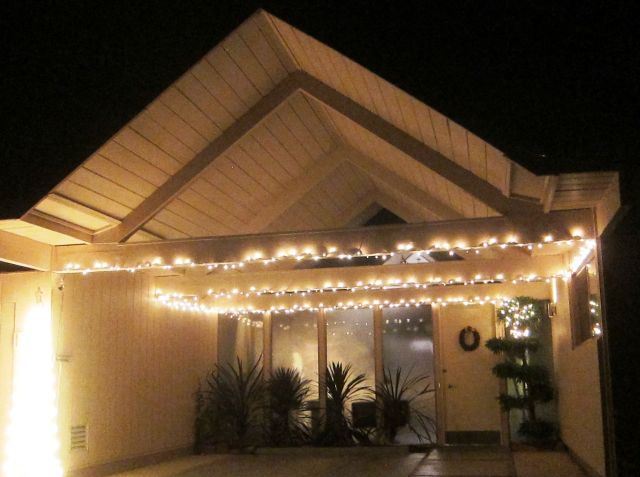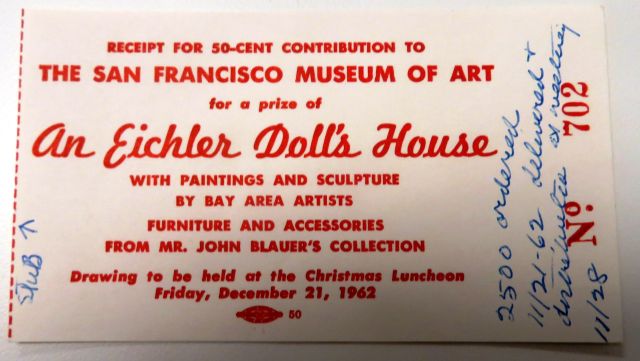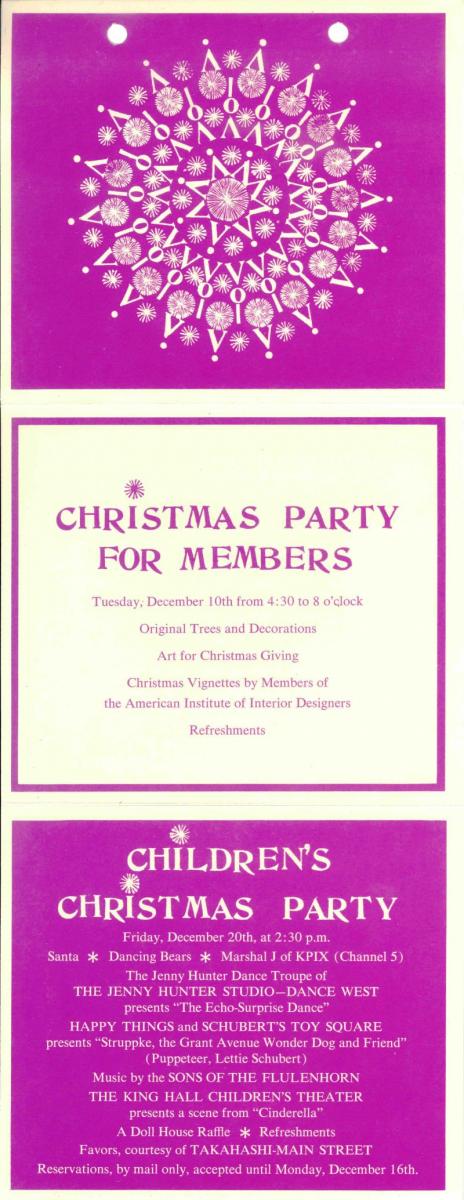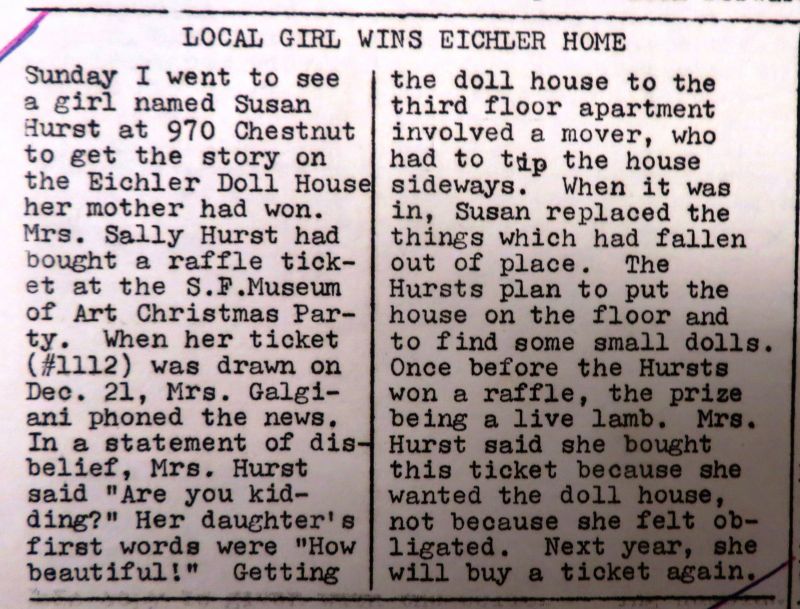
Eichler Holiday Doll Houses Were a Prize
 |
|
|
For decades, the San Francisco Museum of Art Christmas Festival was one of the grand events of the holidays, featuring an elegant evening for members, a lively afternoon party for their children, and a luncheon with the San Francisco Symphony.
And for two of those years the centerpiece for the celebration was “a perfectly scaled doll house” built by Joe Eichler, working with his in-house architect John Boyd. The doll house was raffled off to raise funds for the museum.
It was a “nine room house with central atrium,” the San Francisco Chronicle reported, scaled at three quarters of an inch to a foot. Inside could be seen “a tiny Christmas tree, a garage and carport with cars inside, a miniature sculpture by Gertrude Murphy, little paintings by Julius Wasserstein and John Johannsen, hand-loomed rugs by Mrs. L. Henry Garland, and a pool and sculpture for the atrium designed by George Hellyer.”
The museum, today called the San Francisco Museum of Modern Art, occupied part of the Veterans Building at the time.
The Women’s Board, which had been hosting the celebration since 1947, did it up big, producing what another columnist in 1962 called an “always merry and ever jam-packed yearly membership party.”
 |
|
|
The 1962 event, for example, when Eichler debuted the first of his doll houses, featured dozens of holiday “vignettes,” some created by well-known designers.
There were Christmas trees galore. Columnist Millie Robbins described trees made from “peanuts, macaroni, seashells, feathers, ferns, and phony packages.”
The chair of the festival was Mrs. Victor Bergeron, the wife of Trader Vic. Two years running, 1962 and ’63, winner for best tree was Betty DeMars, wife of architect Vernon DeMars.
The kid’s parties were equally lavish, in 1962 and 1963, with such features as master of ceremony Marshal J, a radio DJ complete with cowboy hat, a performance by the Sons of the Flueglhorn, and the Grant Avenue Wonder Dog & Friends.
The Women’s Board ran the events to raise funds for the museum, selling trees and décor, pulling in $760 from the bar in 1962 (for total profits that year of $3,606). “The balloon girls selling [drink tickets] were pretty and at the same time business-like,” the festival reported in 1962.
 |
|
|
Performers did so as volunteers, and Joe donated his doll house.
Apparently the ideas for the doll house came late. It was not mentioned in the planning meeting of October 1962, just two months before the event.
“Museum Women’s Board member Mrs. John G. Galgani had the doll house brainstorm, persuaded Eichler to build it, and then got doll furniture manufacturer John Blauer to donate the modern décor,” the Chronicle reported.
“The lovely, completely furnished Doll House built by Eichler…occupied the center of the sculpture court,” the women’s board reported. It was also given center stage at the children’s party.
“Your model was the pièce de resistance of our Christmas party!” the president of the board wrote to Eichler, inviting him to come by and see for himself. (It’s not known if Joe did.)
“It is extremely elegant looking, built as you planned it around the charming atrium,” she says. “Its generous floor plan seemed to interest many of the adults. It opened eyes to many who did not identify a ‘tract’ house with such size nor such originality and elegance.”
And the winner of the doll house raffle?
Mrs. Sally Hurst of 970 Chestnut Street, San Francisco who bid “not because she felt obligated” to donate, she told the Russian Hill Gazette, but because she loved the house – and wanted it for her ten-year-old daughter, Suzy – whose first words on hearing the news were “How beautiful!”
“Had we searched from coast to coast,” Mrs. Hurst told Mrs. Galgani, who passed the word onto Joe, “we could not have found a more perfect recipient than her ten-year-old Suzy.”
“Getting the doll house to the third floor involved a mover, who had to tip the house sideways,” the Gazette reported, adding, “The Hursts plan to put the house on the floor and to find some small dolls.”
The paper noted that the Hursts had good luck with raffles. “Once before the Hursts won a raffle, the prize being a live lamb.”
 |
|
|
The success of the 1962 Eichler doll house, which pulled in $541, got Mrs. Galgani thinking big. She asked Eichler to donate another house in 1963, suggested getting it by July, and working with a top interior designer on its furnishings. “We could then have a major promotion,” she wrote.
Eichler did produce a second doll house, and it too won much admiration. He built it in early October – and the interior designer was the worthy, but 13-year-old, Dennie Palmer, daughter of active members.
This time the raffle proceeds showed a modest increase, $622. And the winner, perhaps unwilling to go through the grueling press grilling that faced young Suzy, remained anonymous, the name redacted even in internal Women’s Board records.
As for a photo of either of the two Eichler holiday doll houses – if you have one, let us know.
- ‹ previous
- 174 of 677
- next ›



